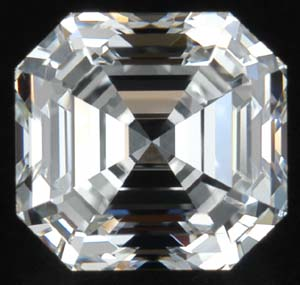Established in 1975, The International Gemological Institute (IGI) is the largest international gemological institute. Using the standardized diamond grading methods, the IGI offers professional diamond grading reports for loose natural diamonds. Every diamond evaluated by the IGI is analyzed by several gemologists who use only state-of-the-art-equipment to accurately describe your diamond's characteristics. IGI Diamond Reports always print the date of issue, report number and include a special security seal.
 I.G.I. is headquartered in Antwerp and has offices in many cities around the world like New York City, Hong Kong, Tokyo, Toronto, Los Angeles, etc.
I.G.I. is headquartered in Antwerp and has offices in many cities around the world like New York City, Hong Kong, Tokyo, Toronto, Los Angeles, etc.
As the world's largest independent gem certification and appraisal institute for diamonds, coloured gemstones and jewellery, IGI is a standard of excellence for industry professionals and consumers around the globe. The IGI Diamond Reports clearly discloses the details of any item it accompanies, providing confidence for both buyer and seller.
IGI Diamond Reports have different formats and presentations, customized to serve a wide range of consumer demand in our different worldwide markets. Regardless of format, every IGI Diamond Report is issued according to the strict international standards and security features for which IGI is known.
The IGI Diamond Reports include the same information as the GIA Diamond Report but without a proportions diagram. Instead, the IGI provides specific proportion measurements and a proportion grade of Poor, Fair, Good, Very Good, or Excellent.
I.G.I. Certified Diamond Reports provide this information:
 I.G.I. is headquartered in Antwerp and has offices in many cities around the world like New York City, Hong Kong, Tokyo, Toronto, Los Angeles, etc.
I.G.I. is headquartered in Antwerp and has offices in many cities around the world like New York City, Hong Kong, Tokyo, Toronto, Los Angeles, etc.As the world's largest independent gem certification and appraisal institute for diamonds, coloured gemstones and jewellery, IGI is a standard of excellence for industry professionals and consumers around the globe. The IGI Diamond Reports clearly discloses the details of any item it accompanies, providing confidence for both buyer and seller.
IGI Diamond Reports have different formats and presentations, customized to serve a wide range of consumer demand in our different worldwide markets. Regardless of format, every IGI Diamond Report is issued according to the strict international standards and security features for which IGI is known.
The IGI Diamond Reports include the same information as the GIA Diamond Report but without a proportions diagram. Instead, the IGI provides specific proportion measurements and a proportion grade of Poor, Fair, Good, Very Good, or Excellent.
I.G.I. Certified Diamond Reports provide this information:
- Description
- Shape and Cut
- Weight
- Measurements
- Depth Percentage
- Table Percentage
- Crown Angle
- Pavilion Angle
- Culet Size
- Girdle Thickness
- Polish/Symmetry
- Clarity Grade
- Color Grade
- Fluorescence
- Comments about Diamond
- Plot of Internal and External Inclusions.

















